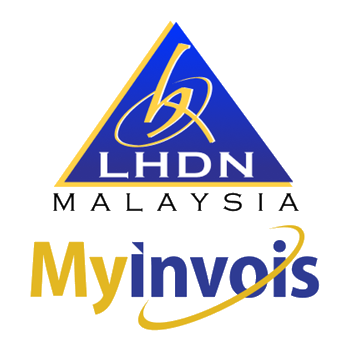The landscape of invoicing in Malaysia is undergoing a significant transformation with the implementation of e-invoicing. This change is spearheaded by the Inland Revenue Board of Malaysia (LHDN) through the introduction of the MyInvois Portal. This initiative marks a pivotal step toward modernizing the country’s financial transactions, making them more efficient and streamlined.
In this article, we will delve into the nuances of the LHDN MyInvois Portal, explore the benefits of e-invoicing, and discuss how businesses in Malaysia can adapt to this new system effectively.
Understanding the LHDN MyInvois Portal
The LHDN MyInvois Portal is a digital platform designed to facilitate the electronic submission and management of invoices. It is part of a broader effort by the Malaysian government to digitize business processes, enhance transparency, and improve compliance with tax regulations.
What is E-Invoicing?
E-invoicing refers to the exchange of invoice documents between a supplier and a buyer in an integrated electronic format. Unlike traditional paper invoices, e-invoices are digital from their creation to their payment, offering a seamless process that reduces errors and delays.
Why Malaysia is Moving Toward E-Invoicing
The push for e-invoicing in Malaysia is driven by several factors:
- Efficiency: E-invoices can be processed faster than paper invoices, reducing the time needed to approve and pay them.
- Cost-Effectiveness: By eliminating paper, printing, and postage costs, businesses can save money.
- Error Reduction: Automation reduces the chances of human error, which is common in manual data entry.
- Compliance: E-invoicing helps ensure compliance with tax regulations by providing accurate and timely records.
Features of the LHDN MyInvois Portal
The MyInvois Portal is equipped with several features designed to make the invoicing process smoother for businesses.
User-Friendly Interface
The portal offers an intuitive user interface that simplifies the process of creating, sending, and managing invoices. Its design is aimed at reducing the learning curve for users, ensuring that businesses can quickly adapt to the new system.
Secure Transactions
Security is a top priority for the LHDN MyInvois Portal. The platform uses advanced encryption technologies to protect sensitive financial data, ensuring that transactions are safe from unauthorized access.
Real-Time Processing
One of the standout features of the MyInvois Portal is its ability to process invoices in real-time. This means that businesses can receive instant notifications about the status of their invoices, enabling them to manage their cash flow more effectively.
Integration Capabilities
The portal is designed to integrate seamlessly with existing accounting and financial systems. This integration ensures that businesses can incorporate e-invoicing into their current processes without significant disruption.
Advantages of Using the MyInvois Portal
Implementing e-invoicing through the MyInvois Portal offers numerous benefits for Malaysian businesses.
Improved Efficiency
By automating the invoicing process, businesses can significantly reduce the time and resources required to manage invoices. This efficiency allows companies to focus on their core operations instead of administrative tasks.
Enhanced Accuracy
Automation minimizes the risk of errors associated with manual data entry. This accuracy is crucial for maintaining accurate financial records and ensuring compliance with tax regulations.
Better Cash Flow Management
E-invoicing provides businesses with better visibility into their financial transactions. With real-time updates, companies can monitor their cash flow more effectively, making it easier to plan for future expenses and investments.
Eco-Friendly Solution
By reducing the need for paper, e-invoicing is an environmentally friendly solution that aligns with global sustainability efforts. Businesses can reduce their carbon footprint and contribute to a greener planet.
Steps to Implement E-Invoicing in Your Business
Transitioning to e-invoicing may seem daunting, but with the right approach, it can be a smooth and rewarding process.
Assess Your Current Invoicing System
Before implementing e-invoicing, evaluate your current invoicing processes. Identify areas where improvements can be made and consider how e-invoicing can address these issues.
Choose the Right Software
Select e-invoicing software that integrates well with your existing systems. The software should be user-friendly, secure, and capable of handling the volume of invoices your business processes.
Train Your Team
Ensure that your team is well-trained in using the MyInvois Portal and any new software you adopt. Provide resources and support to help them transition smoothly to the new system.
Communicate with Stakeholders
Inform your clients and suppliers about your transition to e-invoicing. Communicate the benefits and provide guidance on how they can participate in the process effectively.
Monitor and Optimize
Once e-invoicing is implemented, continuously monitor its performance. Gather feedback from users and identify areas for improvement to optimize the system for your business needs.
More importantly, reconcile your submissions with what is in the MyInvois portal. There could be differences due to human error and/or technical glitches. You want to avoid any discrepancies which may incur penalties.
Conclusion
The implementation of e-invoicing in Malaysia through the LHDN MyInvois Portal is a significant advancement in the country’s financial landscape. By adopting this digital approach, businesses can enhance their efficiency, accuracy, and compliance while contributing to a sustainable future.
As Malaysia continues to embrace digital transformation, the MyInvois Portal represents an essential tool for businesses looking to stay competitive in an evolving market. By understanding its features and benefits, and taking proactive steps to implement e-invoicing, companies can position themselves for success in the digital age.

